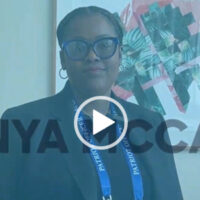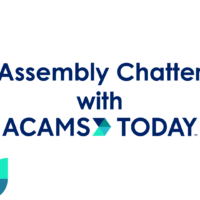
Steve Gurdak has been a member of the Northern Virginia Financial Initiative (NVFI) since its inception in 2003 and has supervised the team since 2009. The Initiative—comprised of a plethora of state, local and federal agencies—has become a national model for Bank Secrecy Act (BSA) and Suspicious Activity Report (SAR) based investigations.
Gurdak has a Masters Certificate in Administration of Justice from George Mason University. He is a retired police detective with over 30 years of experience. He has specialized in money laundering and asset forfeiture investigations since 1995 and now works for the Washington Baltimore HIDTA. Gurdak has travelled around the country to help train and inform both the public and private sector on BSA and SAR based investigations. He also helped design and instruct a course called "New Detectives" for the Northern Virginia Criminal Justice Academy (NVCJA).
ACAMS Today: Your investigative team recently received the Public Service Award from the United States Attorney's Office, Eastern District of Virginia, Alexandria Division. Can you tell us about the award?
Steve Gurdak: Each year the United States Attorney for the Eastern District of Virginia (EDVA) gives out awards for the outstanding cases that were prosecuted or investigated in the district that year. Although our initiative or its members have received such awards in the past, we've been dedicated to aggressive investigation and enforcement of BSA/AML violations which individually tend to be lower profile cases and less colorful for such awards. This year's award recognized more the culmination of our efforts than any individual case even though some specific cases were highlighted.
AT: For which cases specifically did your team receive the award?
SG: Two of the cases involved structuring cash deposits as the primary violation charge we took to trial and both resulted in convictions. Although that law was crafted to be a mechanism to disrupt money laundering schemes, there has been a reluctance to pursue it as a primary offense by law enforcement. We sought to convince a jury of the rationale and reason for using the structuring law as an enforcement strategy. In general one of the most difficult tasks in AML is the ability to simplify seemingly complex financial investigations and convince others it is something they should care about. The prosecutors and investigators did an outstanding job of making jurors understand and care enough to convict.
Another case involved an unlicensed money services business responsible for wiring millions overseas from a very modest storefront. In the best light,"willful blindness" might describe the due diligence applied to any AML compliance. While we may have suspected drug money in the mix, proving that would have been a challenge. We were able to secure a plea deal and close down this outlet.
The other two cases involved a used auto dealer and a landscaping business. In both cases the suspicious handling of cash transactions drew investigative attention. In each case the investigators dug past the cover stories and found illicit motivations behind the cash movements.
AT: What were the key factors that contributed to your team's successful investigation of the cases previously mentioned?
SG: The number one factor is that EDVA and Washington Baltimore HIDTA have been on the cutting edge in recognizing that BSA enforcement and SAR based leads can expose and disrupt the layering and integration phases of money laundering. Law enforcement has become fairly effective in identifying the surface proceeds of criminal activity but far less so in the deeper layers and integration where the criminal source is less obvious. For this initiative, the BSA violations are the primary investigative focus.Too often jurisdictional, agency thresholds, or other agency considerations stifled or prevented investigations from being undertaken even though viable leads were identified.
Take for example one of the cases for which we received an award. A lady who seemed to have extra "bulging" at the waistline was stopped by an airport screener. Bulk cash had been sewn into her girdle. A DEAinitiative suspecting it was drug proceeds seized the money. She later fought to have the funds returned. That likely would have been the case as there was little other evidence to indicate it was drug proceeds. Fortunately, one of my former initiative members recognized a potential BSA violation in her claim to return the money and referred the case to us. My investigator was able to find that the money had been structured out of her son's account at a time when he was filing for bankruptcy and claiming indigence. He subsequently entered a guilty plea in the case.
The other key factor is conversation. I've written before that conversation will be the break that transforms numbers into evidence. I firmly believe that a productive AML interview is far more complicated than the most extreme forensic accounting but is often the least practiced art of the AML professional.There is no money laundering going on in my office; therefore, I want my investigators to get out and talk with people where it is going on.
AT: Did you find any similarities among the cases?
SG: Once you do recognize that conversation is an essential element of an AML case you will simultaneously learn that when talking about money and finances most people have learned to invoke lots of emotion with lots of lies into their responses. It does sometimes take discipline not to be caught up in the emotional responses and realize that emotional responses are often designed to block an evidentiary path. In these cases the cover stories did not hold up to any scrutiny but each at some point invoked altruistic or dire personal hardship motivation for the activity.
I coined the phrase "two beer excuses" to describe the common responses my investigators were getting from subjects they were investigating. "Two beers" is the common response drunk drivers tell officers they consumed when they are stopped. In AML there is a series of these types of responses we normally hear. I jokingly advise my investigators not to comeback with any "two beer excuses" each time I see them going out on interviews.
AT: What attributes are necessary to be a successful investigator in the compliance field?
SG: A good compliance investigator needs to know a little about a lot of common businesses. In AML, establishing "normal" and comparing that to your case is essential. Suspicions need to be compared to norms. Having a general idea of legitimate business norms helps better isolate the suspicious activities.
Another attribute is simplifying the complex or the art of articulation. If you can't describe your case in a paragraph you don't understand it and you will not be able to convince someone else to understand or care about it. If you have trouble doing this it is likely you are confused about what you are trying to accomplish.A good compliance officer will comfortably know their end game.
AT: What type of training has your team received that has helped them during long-complicated financial investigations?
SG: Several members of my team attended the ACAMS Vegas conference last year and several are slated to attend this year. The networking opportunities available through ACAMS is the primary reason I try to keep the team involved with ACAMS.
With that said, I've had a difficult time finding decent training geared to criminal enforcement actions of BSA related violations. In my experiences most AML courses are taught from the top down and normally they don't get too far down. Although there are lots of people who can outline mega-million international money laundering schemes, I find far fewer who are familiar with how to identify the restaurant, nail salon, gas station et al. running the proceeds of the local drug dealer, bookie, panderer, or fraudster through their books. That is what is truly behind a lot of SARs. I see a need for more training in how to recognize that.
We actually created our own internal manual on the detailed specifics of a structuring investigation. We ended up learning most of the nuances between how financial institutions compile, keep and maintain records and how to translate and apply them as investigative leads or evidence the hard way.
AT: As a group supervisor, what advice do you have for other investigators on how to properly lead a financial investigative team?
SG: Numbers are the easiest side of AML. The people side is much tougher. Gear your investigation to create the most productive interview situations possible but do the interviews. The numbers will fall in place when needed.Although investigators sometimes are reluctant to get out and do the interviews, they rarely return unhappy about having done so.
Many of the themes I've discussed during this interview, I have also elaborated on in several articles I have written for ACAMS Today. If you are interested in what the criminal enforcement side of BSA/AML involves I encourage you to take a look at them. I find myself referring back to points I made in "Pizza Logic" regularly with my team.
Interviewed by: Karla Monterrosa-Yancey, CAMS, editor-in-chief, ACAMS, Miami, FL, USA, editor@acams.org










